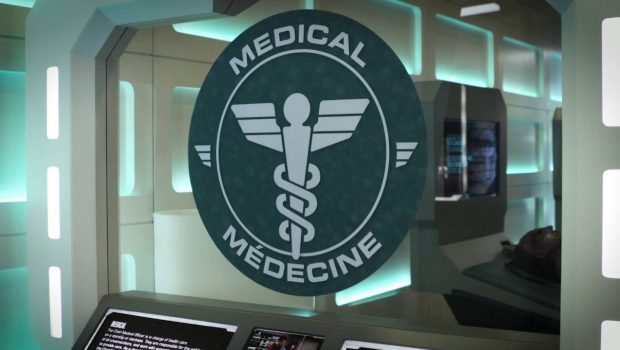
Cadet hospitalizations expose stressful nature of Starfleet training simulations
SAN FRANCISCO, EARTH — Starfleet Academy temporarily removed a holographic training simulation from its rotation this week, after two cadets were hospitalized with severe panic attacks while participating in the exercise.
The simulation requires tactical cadets to defend a starship against a Borg attack, while their engineering counterparts attempt to repair the propulsion systems and escape.
“The cube filled the entire viewscreen,” said Snur, a Bolian engineering cadet who took part in the training. “When we heard them say ‘Resistance is futile,’ I was terrified. I forgot we were on the holodeck.”
According to Snur, a single moment in the simulation provided the trigger for both cadets’ panic attacks.
“The tractor beam was pulling us toward the cube, and this massive hatch opened,” said Snur. “It felt like we were being devoured.”
Emergency medical staff transported the two cadets, whose names they did not release out of privacy concerns, to the Academy’s on-campus medical facility. They were both released several hours later.
Cigruth Fellv, a Starfleet commander and professor of engineering at the Academy, stated that faculty would review this program before using it again.
“While confronting stressful, real-life situations is an integral part of the experience,” said Fellv. “We do not intend the simulation to cause cadets injurious or debilitating anxiety. We will examine the simulation closely, in particular the imagery we used, to ensure its continued suitability as a learning tool.”
Educational institutions have used simulation-based examinations for centuries. Prior to holographic technology, universities and credentialling authorities employed mechanical devices and living actors to simulate emergency situations, medical conditions, and other practical experiences. Perhaps the most famous, or infamous, Starfleet Academy simulation is the 23rd century Kobayashi Maru scenario, which tested command-track cadets’ ability to cope with a no-win situation.
For more about Academy training simulations and stress reactions, see this interview, which FNS reporter Alexander Morningstar conducted with Captain (now Commodore) Jalana Rajel in 2394.
AM: Could you explain in your own words the importance of holodeck technology in training cadets to meet the demands of a captain such as yourself?
JR: I believe that the entire experience at Starfleet Academy prepares cadets to enter their lives as officers. Holodeck simulations can help with these preparations. While we can’t prepare cadets for every single potential situation, the Academy base the training and exam on actual events happening all over the fleet and provides an excellent foundation on training. They basically help cadets learn to work in teams, to focus on the important parts of a situation, and how to make quick decisions, hopefully to the advantage of the crew they work with.
AM: Since you too would have experienced something similar, can you briefly recall your experience and how you felt during the encounter?
JR: That has been a while, but I remember that in my exam simulation our ship was captured by a boarding party of Romulans. Despite being a medical cadet, I had to keep my phaser at the ready, which I would have liked to avoid. I felt nervous, especially after we identified our opponents. It may come as a surprise, but it is very easy to forget that one is part of a simulation.
AM: Would you say that strengthened you as a person or has it negatively affected you?
JR: It absolutely strengthened me. I believe that if I hadn’t been thrown into that situation, I would have been really useless on a ship, being thrown into the real thing for the first time without practise or preparation.
AM: What can you say to the accusations that simulating life-and-death situations seems potentially traumatic? Maybe even cruel?
JR: I don’t think it is. Imagine you find yourself in such a life-and-death situation for the first time. Wouldn’t you prefer it was on the holodeck in safety that gets you prepared, instead of it being real life and freezing up because all you know is the theory? I know I would.
AM: Do you have any advice for someone who has just joined Starfleet and is worried about such a simulation?
JR: The simulations have safety mechanisms. You won’t die or get badly hurt. If you fail one, pull back your shoulders and try again. This is an invaluable experience that will help you learn to evaluate your situation and make quick decisions when it really counts in your later life.
AM: In your experience does this method properly prepare a cadet for their futures aboard a vessel such as the USS Constitution?
JR: There is no method in any training of any institution that prepares you for everything. But they take the simulations from proper missions or are at least based on them. So, yes, they prepare cadets for their future as an officer of Starfleet.
- Crew, residents bid farewell to Starbase 12 in emotional decommissioning ceremony - 240106.28
- Earth wins Fedevision Song Contest 2399 - 239910.01
- Archer IV power grid fails after teenager attempts to replicate replicator - 239907.22
- Planning for permanent USS Resolution memorial underway - 239905.06
- Unearthed ruins jeopardise terraforming project - 239902.18
- Currency experiment wreaks economic havoc on Ferengi colony - 239901.28
- Nan Bacco ‘grateful to be alive’ after wilderness rescue - 239812.17
- Nan Bacco missing, feared dead after runabout vanishes - 239810.22
- Nan Bacco begins 30-planet lecture tour promoting her new book - 239809.17
- Cadet hospitalizations expose stressful nature of Starfleet training simulations - 239806.25


 Previous Article
Previous Article Next Article
Next Article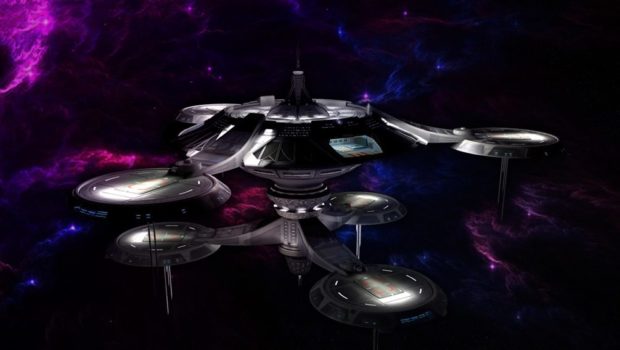 UFOP’s Amity Outpost to Delta Quadrant: We Come In Peace!
UFOP’s Amity Outpost to Delta Quadrant: We Come In Peace! 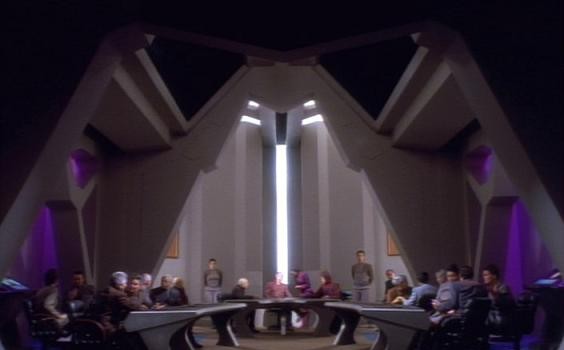 Capture of Cardassian war criminal raises questions, tensions
Capture of Cardassian war criminal raises questions, tensions 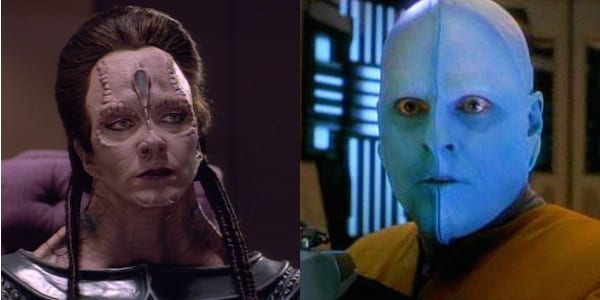 Bolians protest Cardassian practice of wearing of Bolian skin clothing
Bolians protest Cardassian practice of wearing of Bolian skin clothing  Ion storm cripples StarBase 118
Ion storm cripples StarBase 118 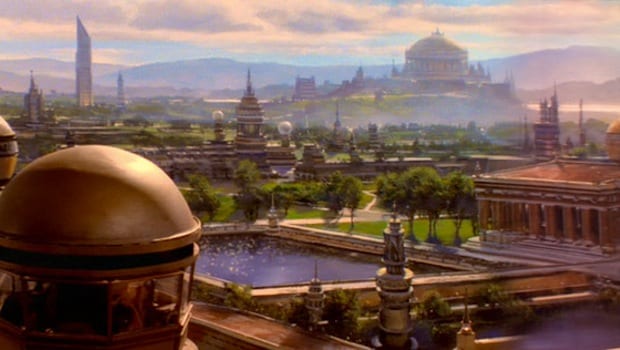 Former Starfleet scientists arrested in Cardassian record controversy
Former Starfleet scientists arrested in Cardassian record controversy  Starfleet ranger missing in action near Tholian border
Starfleet ranger missing in action near Tholian border  Laser Misfire And Mass Casualty Incident Leads To Bizarre Political Drama
Laser Misfire And Mass Casualty Incident Leads To Bizarre Political Drama  Casualties top fifty as second earthquake shakes Tellar
Casualties top fifty as second earthquake shakes Tellar